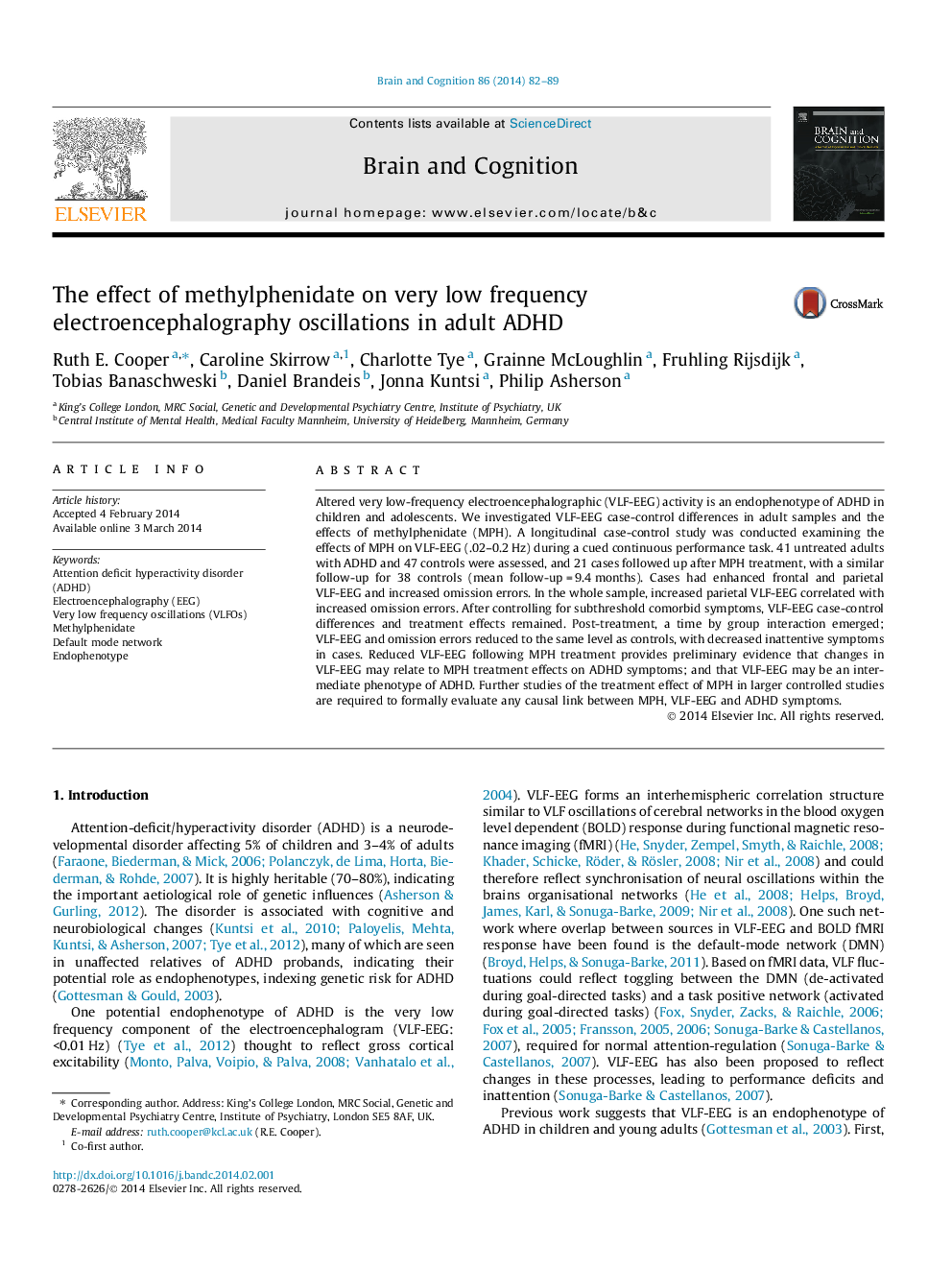| Article ID | Journal | Published Year | Pages | File Type |
|---|---|---|---|---|
| 924267 | Brain and Cognition | 2014 | 8 Pages |
•Treatment effects on VLF-EEG in adult ADHD were tested.•VLF-EEG was higher in untreated adults with ADHD compared to controls.•Increased VLF-EEG related to cognition.•Post-methylphenidate treatment VLF-EEG normalised.•Supports a causal (potential intermediate phenotype) role for VLF-EEG on ADHD.
Altered very low-frequency electroencephalographic (VLF-EEG) activity is an endophenotype of ADHD in children and adolescents. We investigated VLF-EEG case-control differences in adult samples and the effects of methylphenidate (MPH). A longitudinal case-control study was conducted examining the effects of MPH on VLF-EEG (.02–0.2 Hz) during a cued continuous performance task. 41 untreated adults with ADHD and 47 controls were assessed, and 21 cases followed up after MPH treatment, with a similar follow-up for 38 controls (mean follow-up = 9.4 months). Cases had enhanced frontal and parietal VLF-EEG and increased omission errors. In the whole sample, increased parietal VLF-EEG correlated with increased omission errors. After controlling for subthreshold comorbid symptoms, VLF-EEG case-control differences and treatment effects remained. Post-treatment, a time by group interaction emerged; VLF-EEG and omission errors reduced to the same level as controls, with decreased inattentive symptoms in cases. Reduced VLF-EEG following MPH treatment provides preliminary evidence that changes in VLF-EEG may relate to MPH treatment effects on ADHD symptoms; and that VLF-EEG may be an intermediate phenotype of ADHD. Further studies of the treatment effect of MPH in larger controlled studies are required to formally evaluate any causal link between MPH, VLF-EEG and ADHD symptoms.
